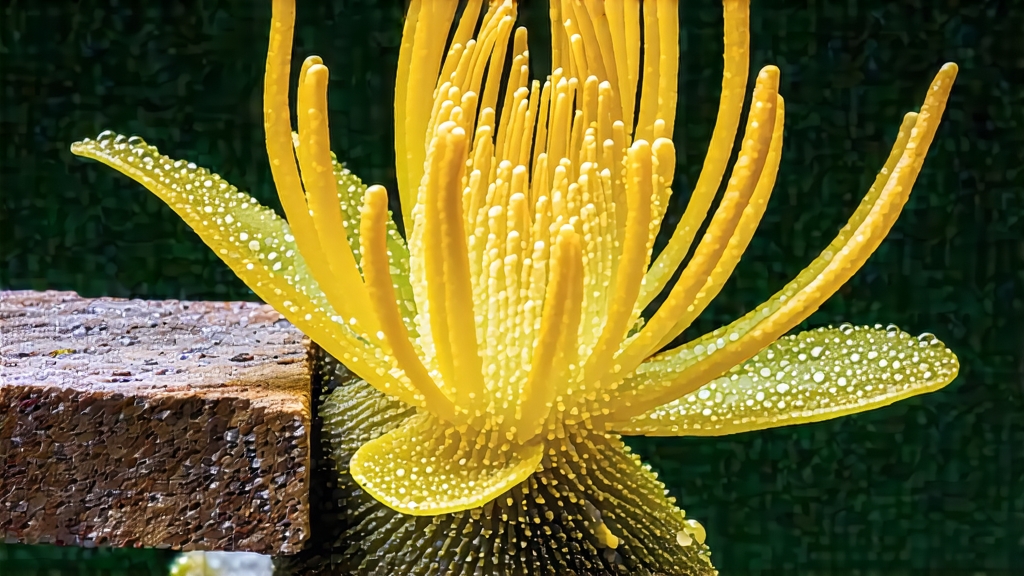
If black tea is the extrovert of the tea family, greeting the world with brisk malt and bright red liquor, then dark tea—known in China as hei cha—is the quiet philosopher, revealing its wisdom slowly, cup after cup, year after year. Among the six major dark teas, none carries a more romantic back-story or a more surprising inner life than Fu brick tea, the brick-shaped, golden-dusted caravan classic that once greased the wheels of the Silk Road and still ferments quietly in the humid mountain warehouses of Hunan.
A 2000-year journey in one paragraph
Caravans leaving the ancient city of Chang’an (today’s Xi’an) around the 3rd century CE needed a tea that would survive six-month journeys across deserts and plateaus. Sun-dried green tea, compressed into 1 kg bricks, was the obvious candidate, but it often molded or turned rancid. Somewhere along the trade route—legend points to Jingyang county in Shaanxi—merchants noticed that the bricks that did survive developed a fragrant, earthy character and a faint yellow bloom. Instead of discarding them, they sold them at a premium to the Mongol and Tibetan elites who prized the soothing, butter-friendly liquor. By the Ming dynasty (1368-1644) the imperial court had codified the production, granting exclusive licenses to counties along the Xiang River in Hunan, where the humid climate and smoky pine forests provided the perfect microbial playground. Thus Fu brick tea—literally “Fu” from the government-run “Fu Tea Bureau”—was born.
What exactly is Fu brick tea?
Fu brick is a post-fermented, microbially ripened dark tea belonging to the “bian xiao cha” (border-sale tea) category. It starts life as a rough, summer-picked Hunan large-leaf cultivar called Yun Da Zhong. After picking, the leaves are withered, pan-fired, rolled, and then piled in humid rooms for 12–18 hours to remove grassy notes. Next comes the critical “wet piling” (wo dui): 200 kg heaps are sprayed with 30 % water, covered with hemp cloth, and left to heat up to 55 °C for 5–7 days, turning every 24 h. This stage, invented centuries before shou puer, softens tannins and creates the precursor flavors of damp earth, cacao, and bark. The half-fermented leaves are then steamed for 90 seconds, pressed into 2 kg rectangular iron molds, and carried into the “Fu room” where the magic happens.
The golden flower: a living hallmark
Inside the Fu room, bricks are stacked like library books, 800 high, with 3 cm gaps for airflow. Over 15–20 days the temperature is kept at 28 °C and relative humidity at 75 %. In this tropical micro-climate Eurotium cristatum—nicknamed “golden flower” for its ochre, star-shaped spores—colonizes the leaf surfaces. A premium brick carries 50–100 million CFU per gram, visible to the naked eye as a fine mustard-yellow dust. Far from being spoilage, the fungus secretes enzymes that convert polyphenols into theabrownins and amino acids into gamma-aminobutyric acid (GABA), yielding a naturally sweet, mellow liquor and a documented blood-lipid-lowering effect that modern Chinese pharmacopeia proudly cites.
Variations on a brick
Today three geographic denominations share the name “Fu brick,” each with subtle differences.
- Hunan Fu Brick: the classic, pine-smoked during drying, giving a resinous top note.
- Shaanxi Fu Brick: uses smaller leaves from the Qinling range, pressed tighter, resulting in a dustier, more medicinal profile.
- Guangxi Liu Bao Fu Brick: a hybrid where Liu Bao dark tea is pressed into brick form and inoculated with Eurotium in Hunan warehouses, marrying betel-nut earthiness with golden-flower florality.
Age further subdivides the genre: “new Fu” (1–3 years) tastes of wet bark and sour plum; “middle Fu” (4–9 years) develops dried jujube and cocoa; “old Fu” (10-plus years) delivers camphor, ginseng, and a lingering rock-sugar sweetness that can outlive many sheng puer of similar vintage.
Craftsmanship in the age of stainless steel
While state-owned factories once used 20-ton